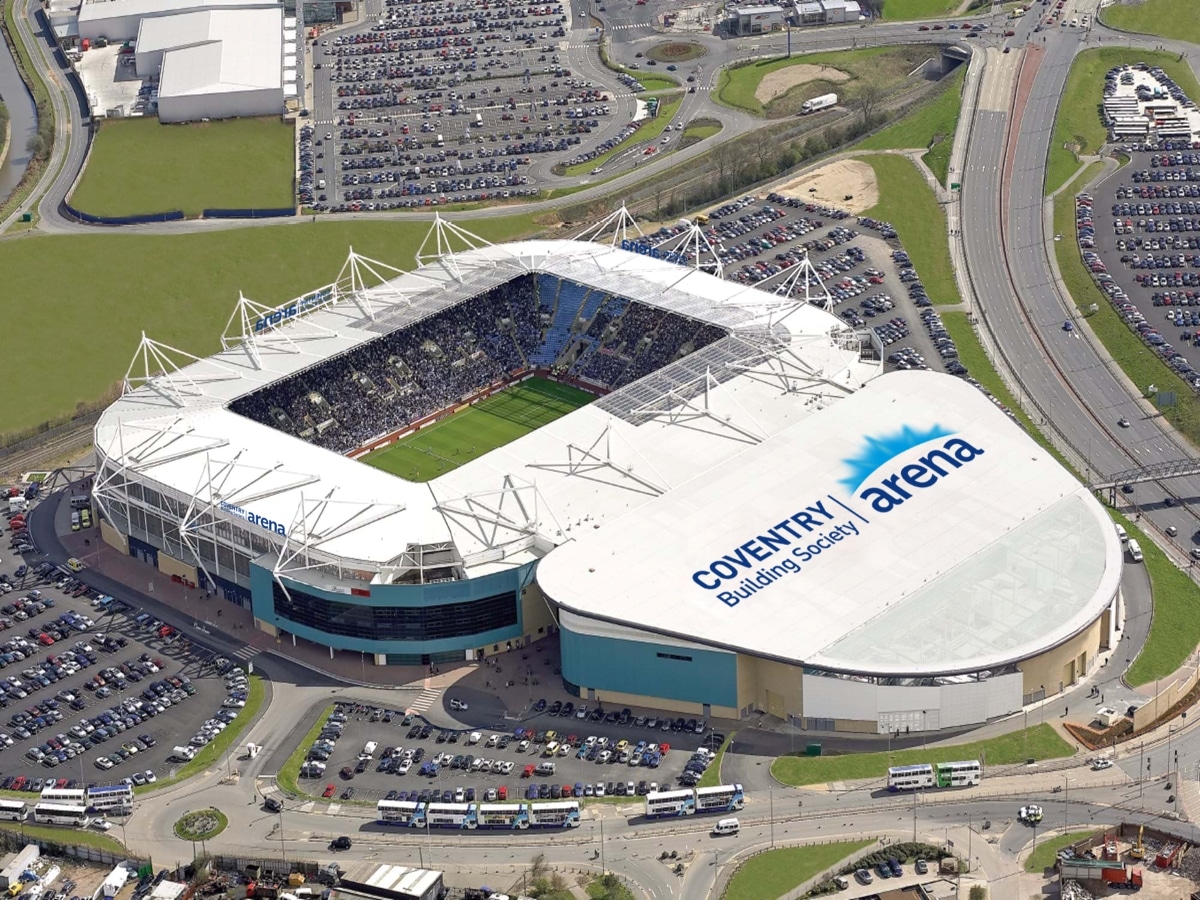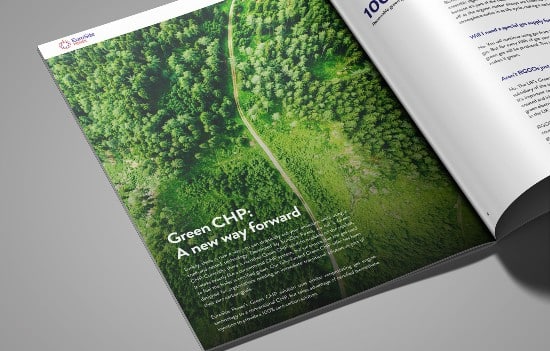Solutions Asset Finance provides a range of support for different sectors in the UK, with one area where we’ve developed particular expertise being the renewable energy market. There are a plethora of energy saving technologies available that can help businesses significantly reduce costs and their carbon footprint, but delivering them often requires substantial capital investment.
SAF has worked with EuroSite Power – a specialist provider of Combined Heat and Power (CHP) plant energy solutions in the UK – for many years. The company offers no-risk, fully funded CHP technology that can help businesses unlock the long-term commercial and environmental benefits of on-site energy generation.
In November 2020, the UK government set out a new ten-point plan for a green industrial revolution, outlining a desire to get to net zero targets more quickly while creating jobs and growth in the economy. It’s clear that solutions like CHP technology could have an important part to play, so will 2021 be a year of even greater demand for the team at EuroSite?
Chris Marsland is EuroSite’s UK General Manager and has worked in the CHP industry since 1998. He’s also a Chartered Engineer and Fellow of the Institute of Engineering Technology. We recently caught up with Chris to discuss the CHP market; his thoughts for the rest of 2021 and why having financial solutions at hand for his clients has been fundamental to business growth.
Q) Can you explain a bit more about CHP and the process behind it?
Combined heat and power (CHP) is classed as an energy efficient, low carbon technology. The process involves capturing the heat that would otherwise be wasted when generating electricity and then making use of it elsewhere, and we do this by installing the generator on a customer’s site. The heat it captures is then used to provide energy for things such as space heating, hot water, cooling or industrial processes.
We describe CHP to customers as an uncomplicated way to lower your energy prices. The UK government have echoed that sentiment and said that for many organisations, “CHP is the measure that offers the most significant single opportunity to reduce energy costs and to improve environmental performance, with existing users of CHP typically saving around 20% of their energy costs.”
Q) What types of customers do you typically work with?
Our core sectors are hospitality, leisure and commercial – any company or organisation in those areas are the ones we find can benefit significantly from CHP technology.
As an example, one of our projects which was supported by SAF was for The Club Company, which owns and operates 15 Country Clubs in the UK. The team there were looking for a solution that would provide a low cost way of reducing their energy expenditure.
We were able to supply them with a EuroSite Power On-Site Utility Solution over a 15-year period to help them address the problem and make some significant cost savings across several sites throughout the UK. The multi-site deal is forecast to save more than £78,000 on annual energy bills.
Q) Tell us a little bit more about the CHP market in the UK and what you enjoy most about it?
As cliched as it may sound, every day is different and the mix of disciplines that you need to be familiar with provides constant mental challenges. I have been lucky in my twenty years as I moved into the sector around the time of one of its biggest upheavals – the introduction of the “New Electricity Trading Arrangements” or NETA. Since then, it has been one high-speed rush of new technology, new solutions, new business models and much more.
Q) Where do you see the CHP market going in the next 5-10 years?
There are so many changes going on in the industry at the moment. Larger projects are currently on the rise, driven by the spark spread, but whether continued development of the regulatory charging environment will start to make these less attractive is a concern. Likewise, the local energy revolution is bringing smaller end users into the market.
I think we will see the rise of the Energy as a Service model such as the one used successfully by EuroSite Power and others becoming more commonplace for all consumers. This will mean that CHP will no longer be an end in itself and that CHP may become a more intermittent source of generation as the provider and its automated management and dispatch system will be chasing the lowest cost/maximum revenue generation, consumption opportunity or lowest carbon emissions.
Last but by no means least are the exciting changes happening with the arrival of low or zero carbon fuel sources for CHPs. There are already trials underway blending Hydrogen with the natural gas being delivered to customers and Hydrogen has many supporters as a practical way of decarbonising heat, especially in the domestic housing stock.
However, the majority of Hydrogen currently produced is not zero carbon. True zero carbon Hydrogen, so called green Hydrogen, is not widely available and when it does become more widely available it may well be used to decarbonise harder to solve heat requirements in industry and transport.
This uncertainty over Hydrogen as a readily available zero carbon fuel doesn’t stop CHP becoming a powerful zero carbon tool as, right now, there are opportunities to use green or renewable gasses in your new or existing CHP.
Q) What could the industry do to improve the uptake of CHP?
There are two main areas where industry could take steps to help more people adopt CHP. Firstly, to move away from the “technical sell”. All too often the approach is based on how many kWs; how many cylinders; what the latest technical innovation are – as an engineer I can be just as guilty as the next person of this.
The sell needs to be on what the impact will be on the customer’s energy bill and environmental impact. We have seen the rise of this alternative selling approach over the last five years, but it is only in the last year or so when the technology is really becoming disconnected from the outcome.
Now we are finally seeing companies offering energy solutions to businesses with no mention of what technology is behind it – it could be solar PV, it could be battery, it could be Demand Side Response (DSR) or it might be CHP – the point is that it doesn’t matter to the customer provided the contractual promises are fulfilled.
As Energy as a Service providers like EuroSite Power extend their offer the customised finance agreements, like those provided by Solutions Asset Finance, become more important as enablers for the smaller Industrial, and Commercial customers needed to allow the UK to meet its 2050 net zero carbon goal.
Q) How has EuroSite benefitted from having financial solutions at hand in conversations with potential clients?
We have helped almost all of our customers to access the energy savings opportunities provided by CHPs through the use of customised finance agreements. As I said earlier the use of a CHP supplier who can finance projects means even those customers with a limited amount of free cash can quickly realise the benefits to their bottom line of CHP’s energy saving potential.
Traditionally, we relied upon equity funding for our CHP projects but realised that we needed to find alternative funding mechanisms in order to deal with larger projects and customers with more complex corporate structures.
For us, Solutions Asset Finance has provided access to a range of funders and funding mechanisms that meet our needs. Having a partner with experience of a broad swathe of industries has meant they have greater understanding of our customers and their business models. Solutions Asset Finance has become an important business partner and we have been able to form strong relationships with their personnel.
Q) What advice would you give to businesses on investing in CHP?
CHP can provide benefits to business in many ways. It can provide cheaper energy to the business, it can provide security of supply, it reduces the carbon footprint of a business, it can also provide additional income streams such a Capacity Market payments, through DSR, or via PPAs for the surplus power that can be generated. For the adventurous, there are further income streams to be had from frequency response or inertia provision to name just two.
In short, do your research carefully, all suppliers I’m aware of provide no-fee initial surveys and quotations. Shortlist a few potential providers for detailed discussions. These discussions can be used to flesh out their project experience, their access to project funding mechanisms, the technical performance of their equipment and whether they can access additional income opportunities. Finally, and in many ways, the most important piece of the jigsaw, is making sure they have local maintenance coverage and that you take out a maintenance contract from day one. However good a CHP may look, or however enticing a financial model may be, CHP only works for a business if it runs!
Some of the contents of this article were created from an interview previously conducted by Sebastian Gray from 2EA Consulting.
“First published by the Solution Asset Finance.”




